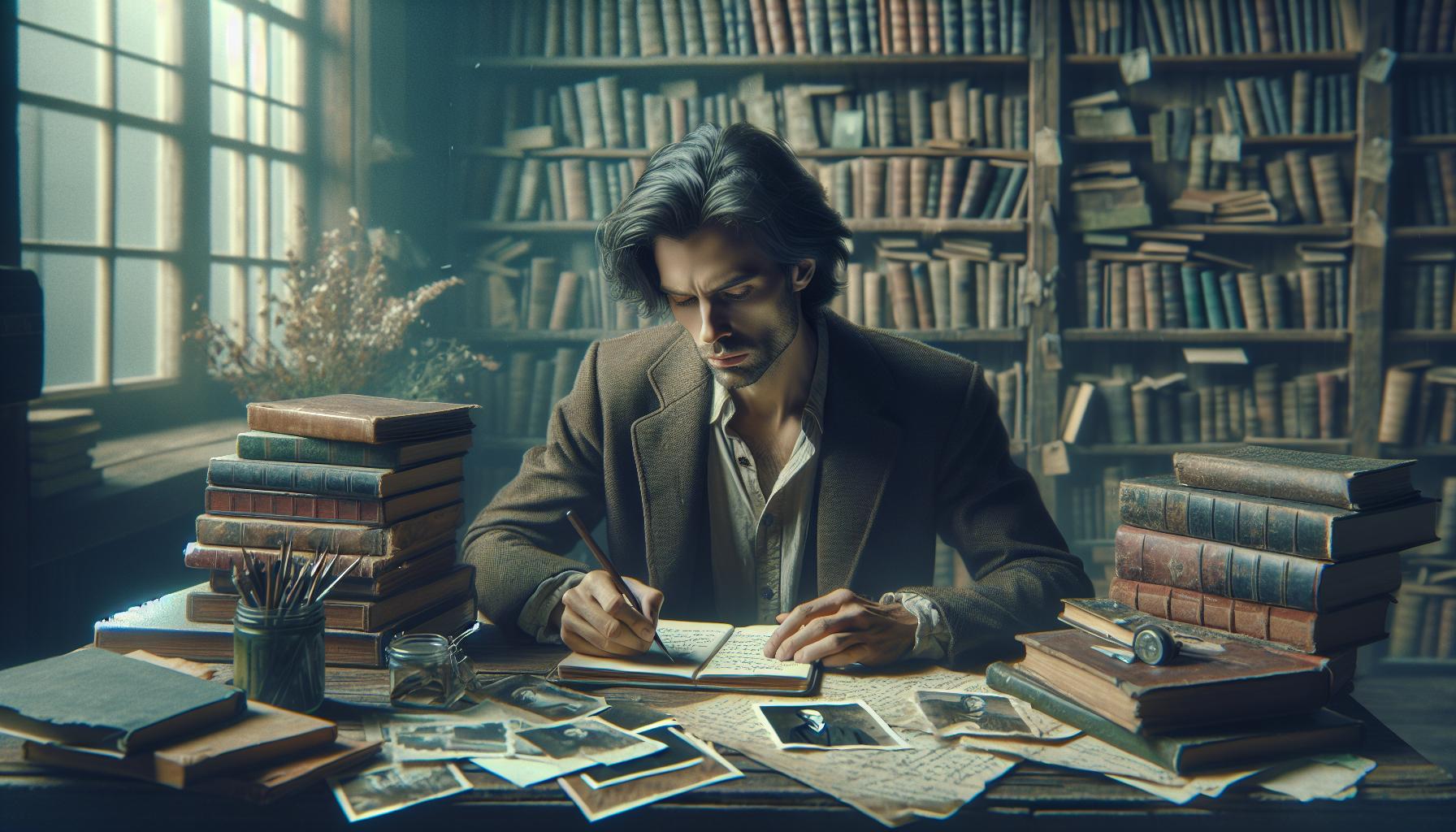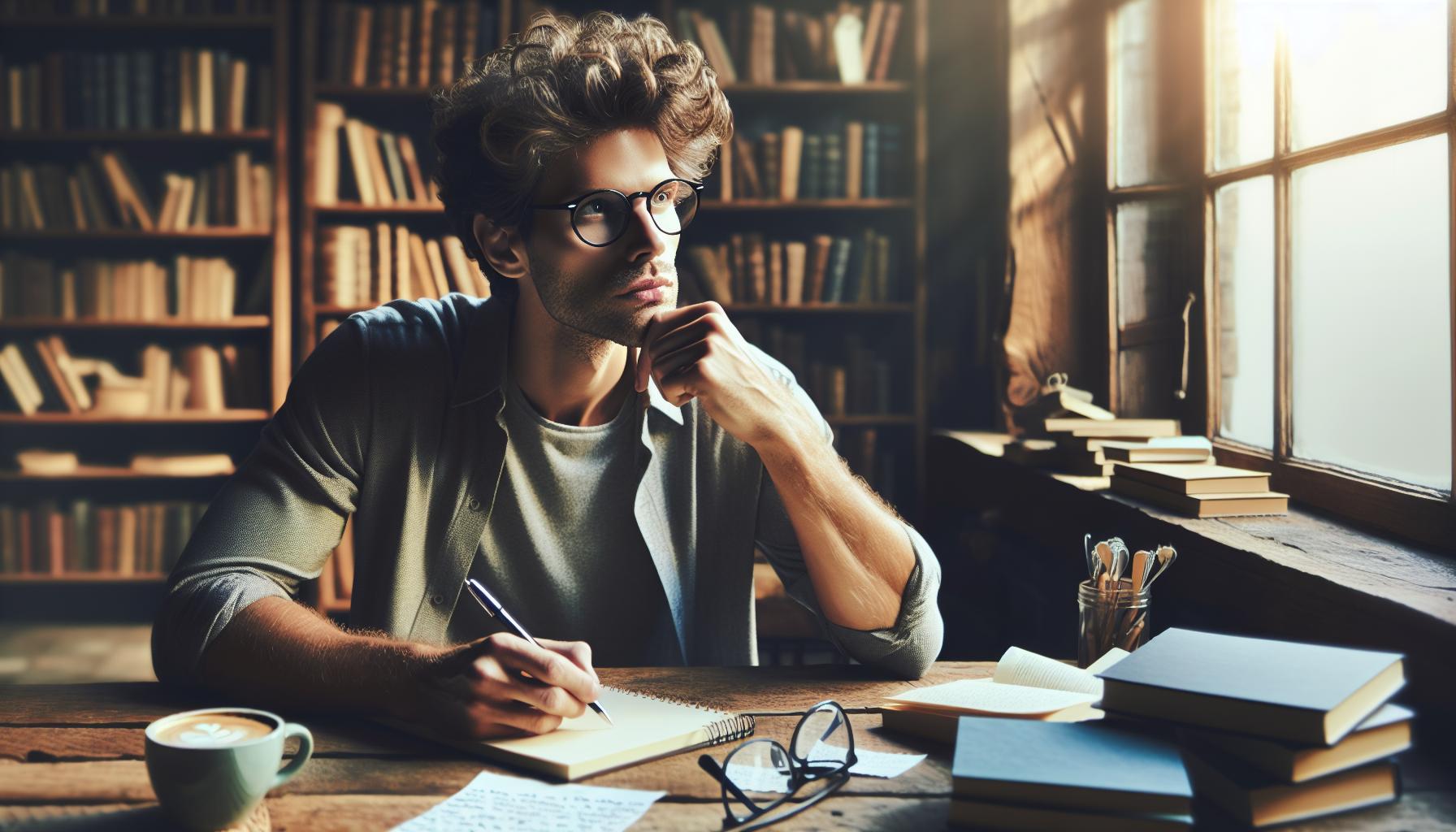Creative nonfiction dances on the edge of reality while fiction dwells in imagination – yet it’s the tools of creative nonfiction that truly dazzle readers. Unlike fiction’s made-up worlds creative nonfiction transforms real-life events into compelling narratives using an arsenal of sophisticated literary devices that pack more punch than their fictional counterparts.
From the artful weaving of memoir and research to the delicate balance of personal reflection and universal truth creative nonfiction writers have developed unique techniques that elevate true stories into literary masterpieces. They’re not just telling what happened – they’re crafting experiences that resonate deeply with readers while maintaining unwavering commitment to factual accuracy. This distinctive blend of creativity and truth-telling demands a special set of literary tools that often surpass the complexity and intrigue of fictional techniques.
Understanding Creative Nonfiction vs Fiction Writing
Creative nonfiction combines factual accuracy with literary techniques while fiction emerges from imagination. The distinctive characteristics of each genre create unique writing experiences for authors.
Key Differences in Approach
Creative nonfiction demands adherence to verified facts through research documentation interviews. Writers navigate real events through scenes dialogue description without inventing characters or plot points. Fiction writers create entire worlds populated by invented characters operating under constructed rules plots themes.
Creative nonfiction employs:
- Detailed research from primary sources
- First-person narrative perspectives
- Scene reconstruction based on facts
- Integration of historical context
- Verifiable dialogue transcripts
Fiction relies on:
- Invented characters plots settings
- Unlimited narrative possibilities
- Metaphorical truth-telling
- Genre-specific conventions
- Imagined dialogue exchanges
The Power of Real-Life Source Material
Real-life stories provide creative nonfiction writers with compelling narrative frameworks anchored in truth. Authors draw from documented events personal experiences historical records interviews to craft authentic accounts. The inherent drama of actual situations creates natural tension conflict resolution.
Source material benefits include:
- Built-in dramatic arcs from real events
- Complex characters with documented histories
- Authentic emotional resonance
- Verifiable settings details
- Natural cause-effect relationships
- Contemporary cultural relevance
These elements combine to create narratives that connect readers to actual experiences while maintaining literary sophistication through careful crafting of true stories.
Literary Tools Unique to Creative Nonfiction

Creative nonfiction employs distinct literary techniques that transform factual material into compelling narratives. These tools enable writers to craft authentic stories while maintaining journalistic integrity.
Immersive Research Methods
Creative nonfiction writers utilize rigorous research methodologies to gather authentic material. Primary research includes conducting in-depth interviews, examining historical documents, visiting locations, and collecting oral histories. Writers engage in participant observation, embedding themselves in communities or situations to capture nuanced details. Documentary evidence forms the foundation of scene recreation, with writers referencing photographs, letters, diaries, and archival records. Advanced fact-checking protocols verify multiple sources, cross-reference testimonies, and validate chronological accuracy. Environmental immersion allows writers to document sensory details, cultural contexts, and atmospheric elements that enrich the narrative.
Personal Voice and Perspective
Creative nonfiction authors establish authentic narrative voices through carefully crafted personal perspectives. First-person narration creates intimacy with readers while maintaining journalistic distance. Authors incorporate reflexive elements to examine their roles as both observers and participants. Interior monologue reveals the writer’s thought processes without compromising factual integrity. Writers blend memoir-style reflection with reportage to illuminate broader themes. Narrative distance shifts between close personal accounts and wider societal observations. Multiple viewpoints emerge through interview subjects’ direct quotes and varied perspectives on shared events.
The Art of Blending Fact and Storytelling
Creative nonfiction writers masterfully interweave factual accuracy with compelling narrative techniques. This delicate balance creates immersive reading experiences while maintaining authenticity.
Creative License Within Truth
Creative nonfiction authors employ specific techniques to enhance factual narratives without compromising truth. Scene recreation utilizes sensory details from documented sources to transport readers to historical moments. Writers incorporate dialogue reconstructed from interviews transcripts oral histories court records to bring conversations to life. Literary devices such as metaphor symbolism foreshadowing amplify the emotional resonance of real events. The arrangement of verified facts in non-chronological order creates dramatic tension through flashbacks flash-forwards parallel storylines.
Building Trust With Readers
Transparent research methods establish credibility with readers through clear attribution documentation verification. Authors acknowledge their sources through endnotes bibliographies research notes primary documents. Creative nonfiction maintains authenticity by distinguishing between verifiable facts composite characters reconstructed scenes. Writers signal speculation uncertainty by using qualifying phrases like “according to records” “evidence suggests” “based on interviews.” Fact-checking processes ensure accuracy in details descriptions dialogue representations of real people events. Attribution methods include incorporating multiple perspectives conflicting accounts divergent interpretations of historical moments.
Innovative Narrative Structures in Nonfiction
Creative nonfiction writers employ sophisticated structural techniques that transcend traditional linear storytelling. These innovative approaches create multi-layered narratives that engage readers through complex patterns of thought and association.
Braided Essays and Fragmented Forms
Braided essays weave multiple narrative threads together to create rich tapestries of meaning. Authors like Leslie Jamison employ this technique in works such as “The Empathy Exams,” combining personal medical experiences with cultural analysis. Fragmented forms break narratives into discrete segments, allowing writers to juxtapose different time periods, perspectives or themes. Joan Didion’s “The Year of Magical Thinking” demonstrates this approach by interweaving present grief with past memories. These structures enable writers to explore complex subjects from multiple angles while maintaining factual integrity. Contemporary nonfiction authors use white space, varying paragraph lengths and typographical elements to enhance these fragmentary forms, creating visual representations of cognitive processes.
Hybrid Genre Techniques
Hybrid genres combine elements from multiple literary forms to create innovative narrative structures. Literary journalism merges reportage with storytelling techniques, as demonstrated in Katherine Boo’s “Behind the Beautiful Forevers.” Lyric essays incorporate poetic devices into prose, exemplified by Maggie Nelson’s “Bluets.” Documentary poetry integrates historical records with verse forms, shown in Claudia Rankine’s “Citizen.” Digital storytelling platforms enable multimedia integration, combining text with audio, video and interactive elements. These hybrid forms expand creative nonfiction’s boundaries while maintaining adherence to factual accuracy through primary source documentation, interviews and rigorous research methodologies.
The Emotional Impact of True Stories
Real-life narratives in creative nonfiction forge deeper emotional connections with readers through their inherent authenticity. The knowledge that events actually occurred adds layers of significance to every detail.
Authenticity as a Literary Device
Authenticity functions as a powerful literary tool in creative nonfiction by creating immediate credibility with readers. Historical records, personal testimonies, and documented evidence provide a foundation of truth that amplifies emotional resonance. Authors like David Sedaris demonstrate this through precise detail in works such as “Me Talk Pretty One Day,” where real experiences transform into universal reflections. The inclusion of verifiable facts, such as dates, locations, and actual people, creates an emotional scaffolding that fiction cannot replicate. Primary source materials like letters, photographs, and news articles serve as emotional anchors, connecting readers directly to historical moments or personal experiences.
Connection Through Shared Experience
Creative nonfiction establishes profound connections by tapping into collective human experiences. Readers recognize their own struggles in Joan Didion’s exploration of grief in “The Year of Magical Thinking” or Ta-Nehisi Coates’s examination of race in “Between the World and Me.” Personal narratives intersect with broader social contexts, creating multiple entry points for reader engagement. The authenticity of lived experiences validates readers’ own similar moments, fostering empathy through shared human conditions. Writers transform individual stories into universal touchstones by grounding them in documented reality rather than imagined scenarios.
Conclusion
The literary tools employed in creative nonfiction writing offer a uniquely powerful approach to storytelling that surpasses traditional fiction. Through meticulous research authentic voices and innovative narrative structures creative nonfiction transforms real-world experiences into compelling literature that resonates deeply with readers.
The genre’s ability to blend factual accuracy with artistic expression while maintaining journalistic integrity sets it apart. Writers harness the inherent drama of real events creating narratives that connect readers to universal truths and shared human experiences in ways fiction simply cannot match.
This marriage of truth and artistry proves that reality when skillfully crafted can indeed be more fascinating than fiction. The genre continues to evolve pushing boundaries and demonstrating that the most powerful stories often emerge from the truth that surrounds us.
